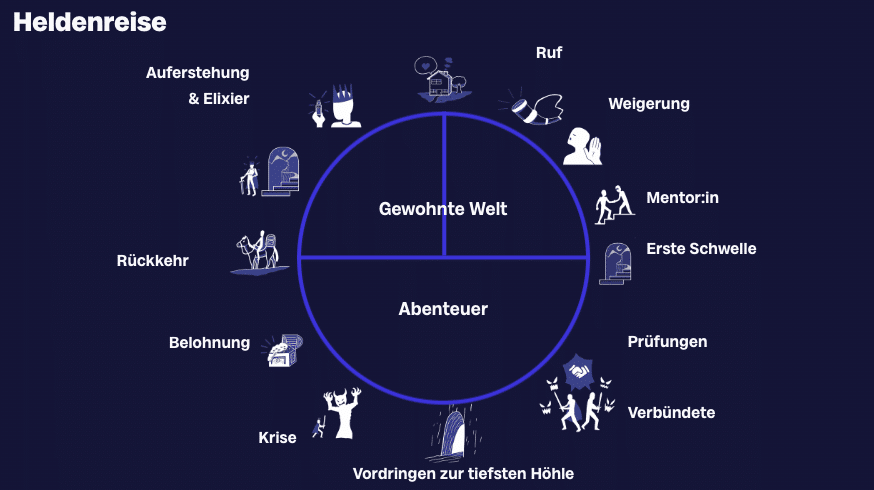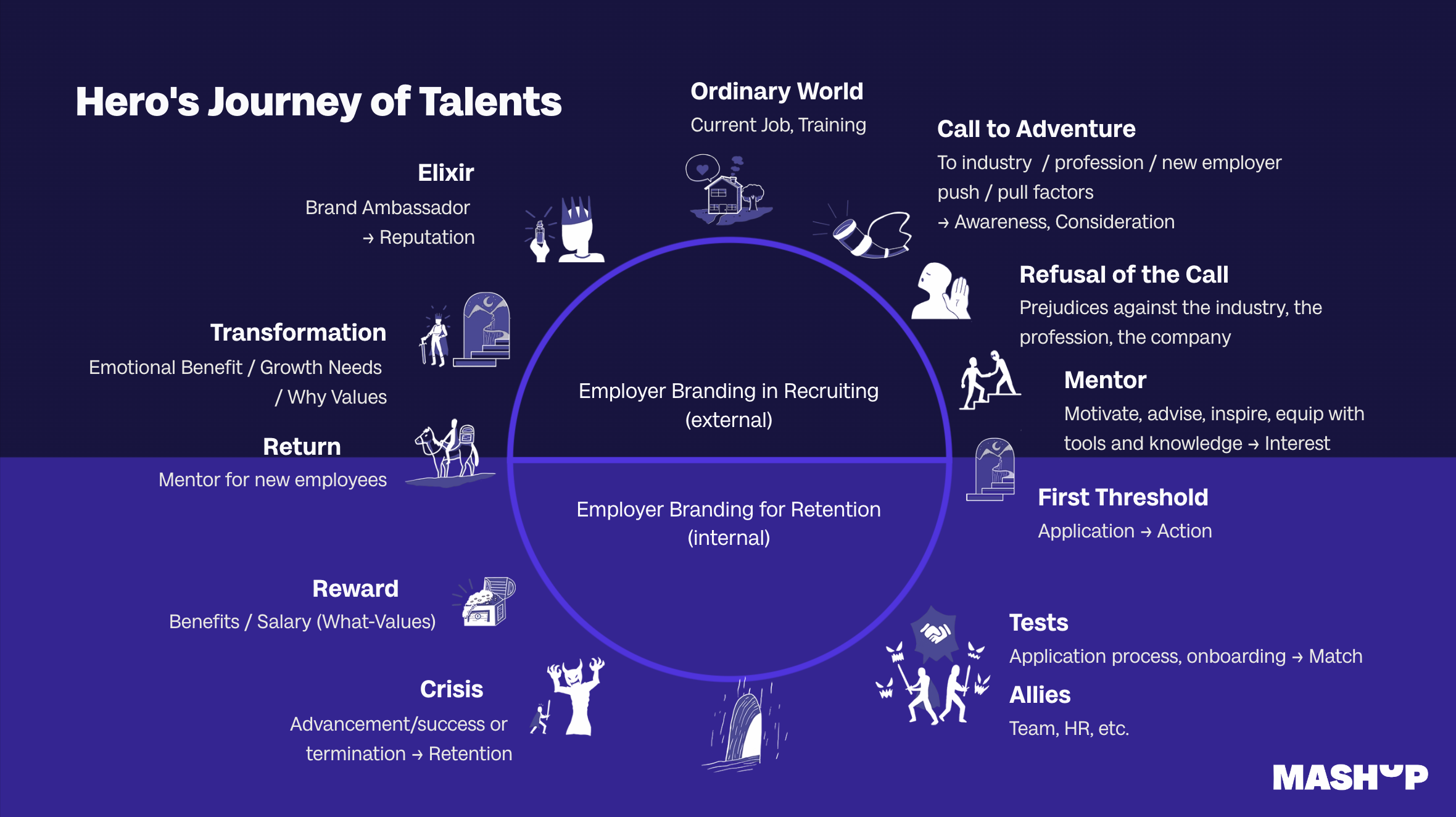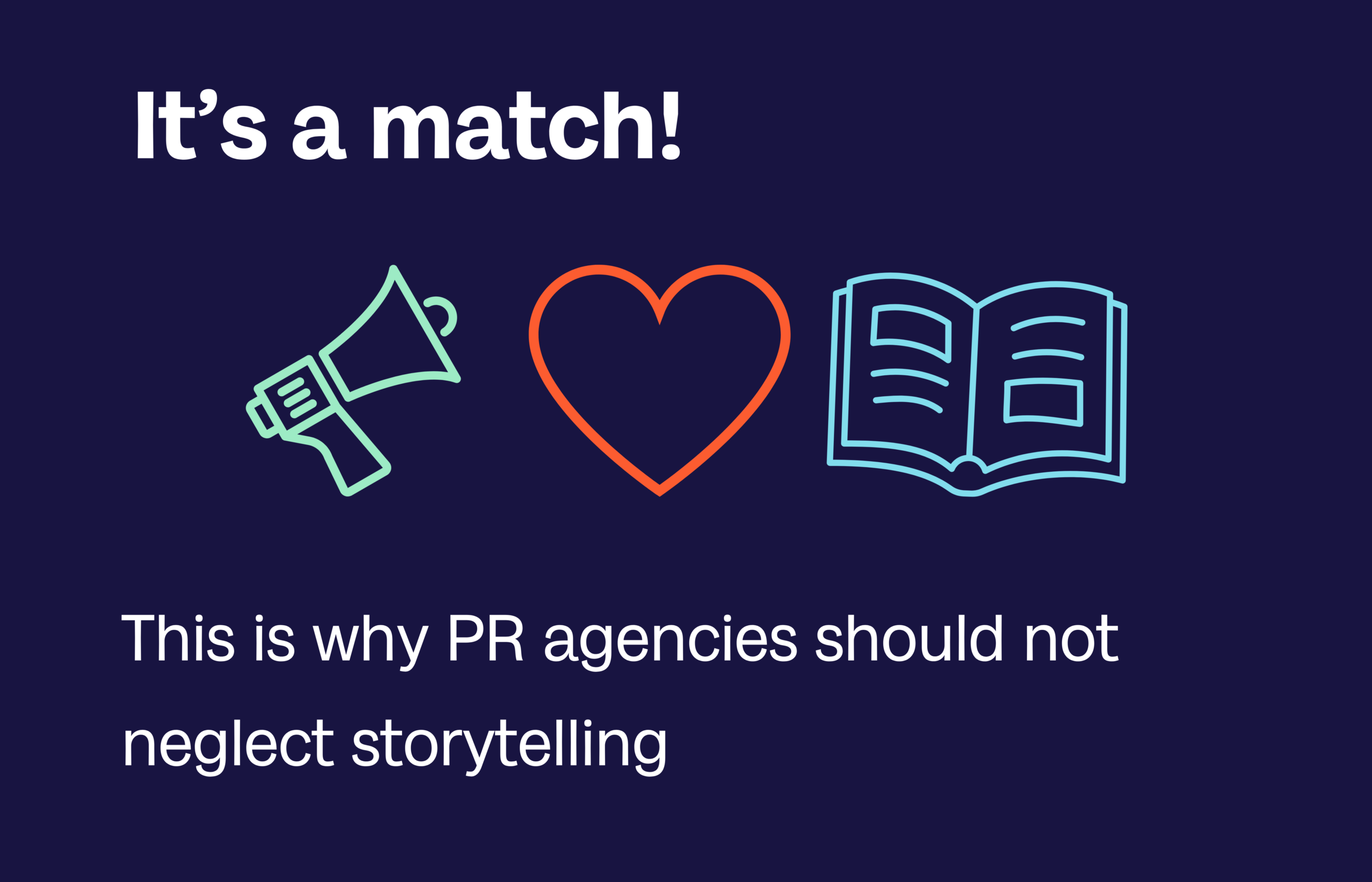5 Storytelling Mistakes that are guaranteed to mess up a Company Story
In the supermarket, at the hairdresser, on posters in the subway: storytelling is everywhere. We are bombarded with hundreds of advertising messages – some touch us and others? Somehow not! How is it that some stories captivate us and we simply ignore others? Find out now how storytelling by companies is guaranteed to go wrong:
1. lack of authenticity? Keep it real!
There is nothing worse than untrustworthy company stories. Of course nobody likes to talk about problems and defeats. However, not everything runs smoothly at any company. It is precisely the stories that sometimes deal with failure that create tension and touch us. That’s why companies should take up the cause of not only telling the good news.

The hero’s journey model helps organizations to package their vision with storytelling. The familiar world is abandoned in response to a call and the transformation into a true hero takes place in a new world full of adventure. By overcoming various hurdles and conflicts, the protagonist ultimately masters and masters this new world, acquires new knowledge and a reward, which is usually exactly what motivated the adventure. The more conflicts that arise, the more potential stories have to create drama.
2. small fraud, big consequences: The story lie
We made a mistake. Even worse than a story that is implausible is one that is not true in the first place! Fairy tales can be told in advertising and in children’s books, but they have no place in a company story. The temptation is always great to embellish reality here and there. However, companies are strongly advised to always stick to the truth. The resulting damage to the company’s image can usually only be rectified with a lot of work or not at all.

3. unnatural content – advertising messages instead of good stories
We’ve all been there: you’re scrolling through your Instagram feed and come across a seemingly random beach photo taken by a blogger – perfect light, perfectly edited. The beautiful protagonist sits on the beach and watches the sunset. And, as is always the case, one important thing must never be missing from their site: the new laundry detergent of brand xy. Such unnatural content and poorly hidden advertising messages are annoying and are usually blocked, skipped or clicked away. Companies should therefore focus on natural content that fits the brand. Real employees and real situations trigger more sympathy in us than a staged, perfect world and clumsily packaged advertising messages.
4. there are people in front of good products – and behind them too
In order to use storytelling successfully, companies must learn that it is not just about their product “saving” the weak and frightened customer. Instead, companies should focus on their heroes, namely their own target group, and recognize and promote their needs for self-realization as mentors. Stories about founders and employees are also much more exciting than hymns of praise for the company’s own product.
5. single-track only? Big mistake
We live in an age in which we consume information via several channels at the same time. It is therefore wasted storytelling potential if companies only rely on one channel to reach their target group. Not only the usual social media channels are of interest here. Newsletters, your own website, blogs, events and trade fairs should also be taken into account. And the same applies here: never lose sight of the emotions and communicate the same, honest message on all channels so as not to lose credibility.
Share this article
Related articles

11 March 2024








